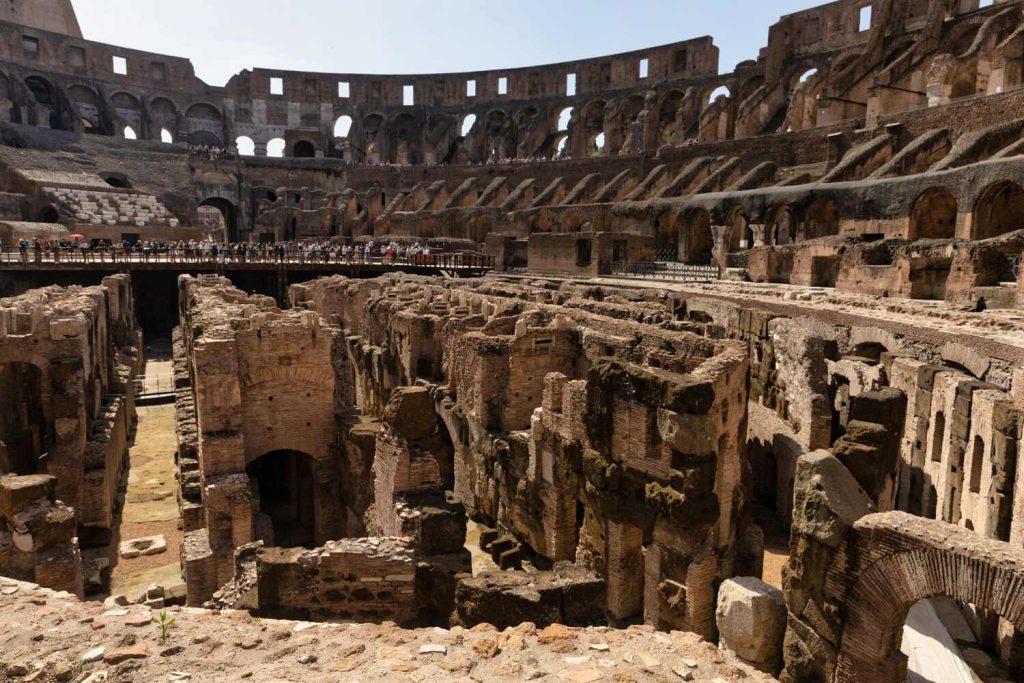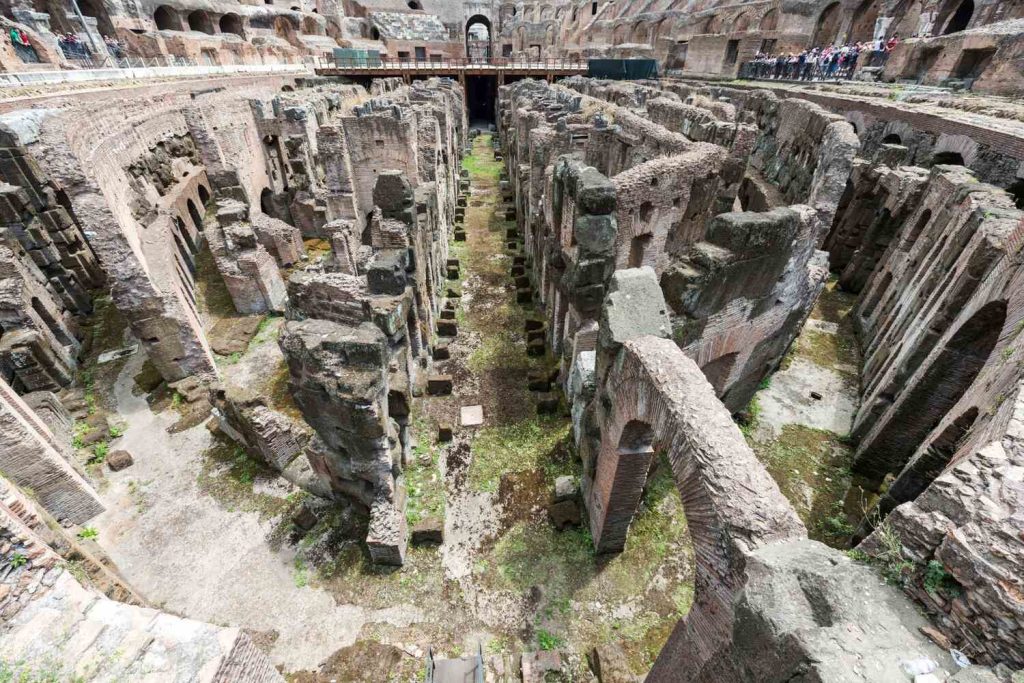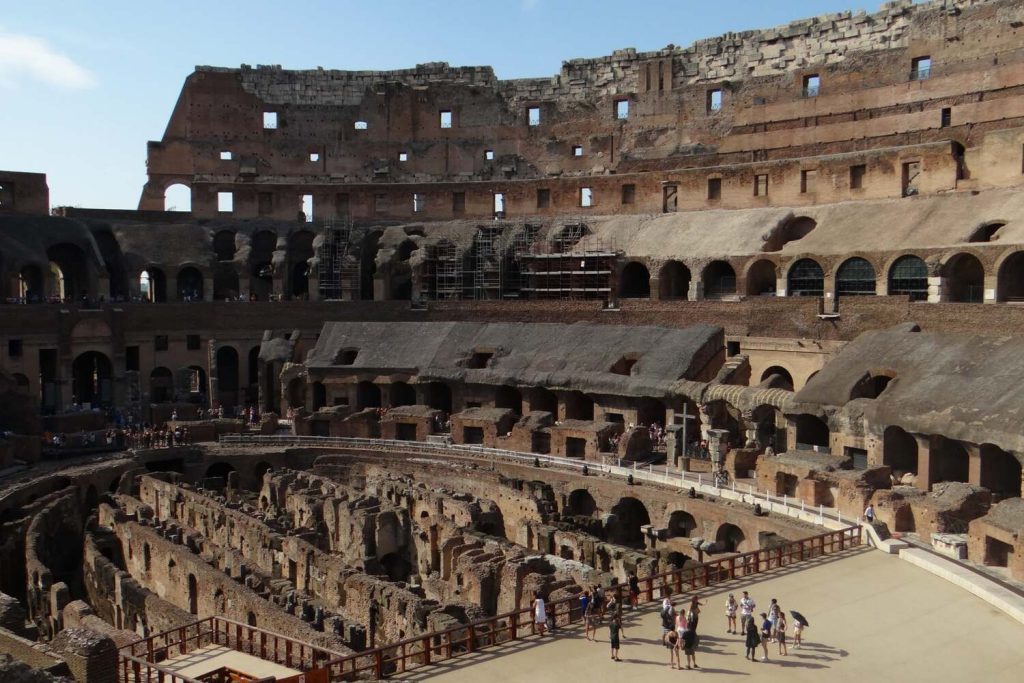What to Expect On a Colosseum Underground Tour
The Colosseum’s underground was where gladiators stood, impatiently, sweating, waiting for their turn to enter the arena and engage in a fight to the death. To learn more about the Colosseum, opt for a guided tour of special sections like the underground.

Why Take an Underground Tour of the Colosseum?
Other than being the only option to visit the Colosseum underground, there are other reasons to join a tour, which are the following:
Discover the Incredible History of the Colosseum: One of the main reasons the underground tour should be an integral part of your Colosseum experience is the history associated with this section. Think of the Colosseum’s underground as the backstage where all the preparation work for a grand gladiator fight took place. Of course, you’ll learn facts and stories about the Colosseum with your guide, which is always a plus.
Explore a Different Aspect of the Colosseum: Another reason to choose an underground tour is the new perspective you gain by exploring this area. The fear and anxiety, coupled with a tense atmosphere, make the underground a chilling place.
Experience the Colosseum Like a Gladiator: Besides learning about the history and the logistics of organizing gladiator fights, another reason to visit the underground is to fully immerse yourself in the gladiator experience of a fight to the death.

What to Expect During an Underground Tour of the Colosseum?
Your tour will include other special parts of the Colosseum, including the arena. The arena floor, also known as the stage, is where your tour will start. This recently built section offers a unique perspective of the Colosseum and is an excellent starting point.
You will enter the Colosseum arena through the Gate of Death and view the gigantic amphitheater from the gladiators’ point of view, who once fought for their lives.
Next, you will be guided to the actual underground of the Colosseum. With the original arena destroyed, most of the underground is exposed to natural elements and shows visible signs of corrosion. However, much of the section is still preserved and protected, giving visitors a glimpse into the detention cells for animals or gladiators. The underground also features reconstructed elevators that show how the spectacle was prepared.
Given the popularity of the underground tour, and the fact that the Colosseum can only accommodate 3,000 people at a time, it’s best to take advantage of the skip-the-line option for your visit.
READ MORE HERE: The Best Tours of the Colosseum

Highlights of the Colosseum’s Underground
The Hypogeum: Gladiator fights and animal hunts were organized in the arena, and the underground, known as the Hypogeum, was the waiting room. It was divided into two levels and connected by a series of corridors and tunnels leading to the arena.
The Hypogeum was like the Colosseum’s backstage, where everything happened. It was also the holding area for animals caged before and after events. The underground was always bustling with people preparing for the shows, constantly moving scenes, transporting props, and handling animals.
It’s worth noting that most tours of the Colosseum at night include a visit of the Colosseum Underground, and it’s the best moment of the day to explore.
Wooden Elevators: The transportation of animals, stage equipment, and even gladiators waiting for fights to the arena was done using numerous wooden elevators hidden under the gigantic amphitheater. The concept and execution of these wooden elevators are considered an incredible architectural feat. They were articulated by a system of tilts and counterweights. The elevators are also connected to the tunnels and corridors beneath the main gathering area.
Tunnels and Monumental Entrances: The elaborate tunnel system under the arena included corridors and intersecting passages leading to the main stage. The emperor also had his own separate tunnels and the Vestal Virgins to enter and exit the Colosseum to avoid interactions with other spectators.
These tunnels were also directly connected to their imperial residences. Even the tiles used in these tunnels were different from others and had elaborate decorations. Beyond the tunnels, the underground structure also had two monumental arches for the gladiators to enter the arena.

History of the Colosseum’s Underground
Construction began under Emperor Vespasian between 70 and 72 AD and was completed under his heir, Titus, in 80 AD. The underground, also known as the Hypogeum, was not part of the initial construction. Its construction was later ordered by Emperor Domitian.
The construction was completed about 10 years after the arena’s inauguration. The Colosseum’s underground area included a tunnel system with two main corridors and 80 vertical shafts for immediate access to the arena. The underground was restructured and built at least twelve times. It also contained a considerable number of machines, including elevators and hydraulic mechanisms.
Over the centuries, the underground space of the Colosseum became completely submerged. Excavation work began in the late 19th century and continued after the 1930s. The underground was opened to tourists for the first time in 2010, with limited time slots. Due to the popularity of the underground tour, it can only be explored with a licensed guide.

FAQ About the Colosseum Underground
Last but not least, let’s answer some common questions that first-timers have when visiting the Colosseum Underground.
What is a Guided Tour of the Colosseum Underground?
The underground tour takes you literally under the Colosseum, where animals and gladiators waited for their turn to participate in contests and events. It allows you to discover the Colosseum’s backstage.
Do Colosseum Ticket Include Access to the Underground?
No, not all Colosseum tickets include access to the underground section. You need to purchase tickets specifically for the arena floor, underground section, and Belvedere tour.
Do Underground Tours Include Skip-the-line Access to the Colosseum?
Yes, your underground tour of the Colosseum includes direct access to sections such as the underground and arena.
Is the Underground Colosseum Worth it?
Yes, the underground tour offers priority access to the arena, underground, and third floor, if the ticket includes it, making it a memorable experience.
Can you Visit the Colosseum Underground by Yourself?
No, access to the Colosseum’s underground is only possible with a guided tour. Only two levels of the Colosseum are open to the public for self-guided tours.
How to book an Underground Tour of the Colosseum?
We recommend prebooking your tour online before visiting as tours including the Underground are particularly popular. In case you can’t find the tour that matches your preferences, feel free to contact us and we’ll be happy to offer a few options.

Conclusion – Underground Tour of the Colosseum
Exploring the Colosseum’s underground offers a unique and immersive perspective on one of the most iconic landmarks in history. From the intricate system of tunnels and elevators to the haunting Hypogeum where gladiators and animals awaited their fate, the underground tour provides a deeper understanding of the ancient world’s architectural ingenuity and the intense preparation that went into the grand spectacles of the arena.
If you’re planning a visit to the Colosseum, the underground tour is an absolute must. It allows you to walk in the footsteps of gladiators, see the world from their viewpoint, and gain a profound appreciation for the complexities behind the scenes. Be sure to book your tickets in advance, take advantage of skip-the-line options, and prepare yourself for a fascinating journey back in time.





